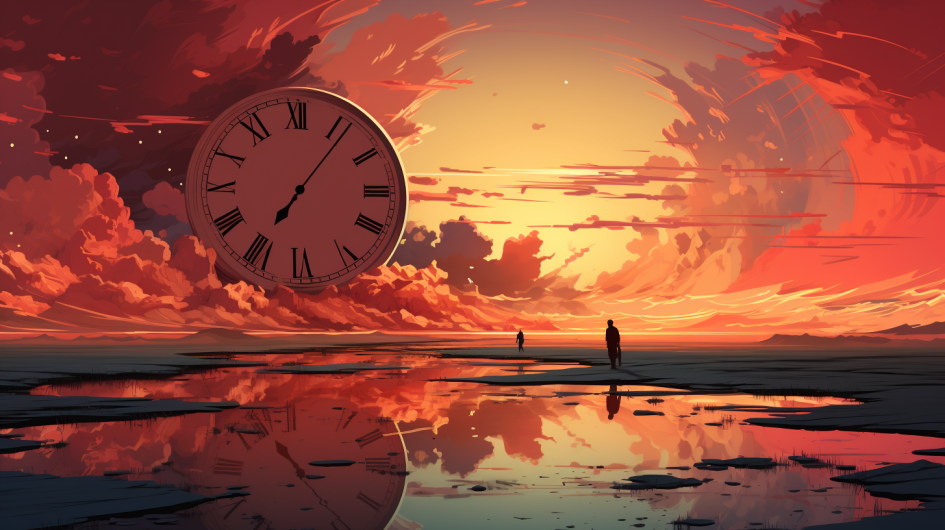Generative Fill: A Time-Saving Solution or a Mirage?
A comprehensive look at Generative Fill, its limitations, advantages, and more

In our previous exploration of Generative Fill, we charted a journey through the realm of the tool's impressive impact on creativity. Today, we're diving deeper, spotlighting how it could become the time-turner in every graphic artist's arsenal. While our road goes over the undeniable advantages of Generative Fill, we'll also have a look at its limitations, giving you an all-encompassing review.
Winning Against The Clock
In a race between manual design and Generative Fill, the latter leaves the former eating its digital dust. Traditional graphic editing often feels like a never-ending task, filled with laborious detail work. By contrast, Generative Fill serves as a swift tool, speeding up the process by handling the heavy lifting of content generation, blending, and gap filling.
The impact of these time savings on the creative process cannot be overstated. Picture this: rather than wrestling with pixel-perfect editing, artists are free to conceive new ideas, their minds unshackled from the tedium of technical labor. The saved hours could be directed toward new projects or used to meet looming deadlines without breaking a sweat. All this while hopefully producing awe-inspiring, high-quality art (don’t let the robots do it all, kids!).
No Uphill Road Is Free of Hurdles
On the flip side of this shiny coin, some limitations do exist. Just as Icarus learned that soaring too close to the sun has its drawbacks, users of Generative Fill must navigate its potential pitfalls. Why? Because as fun as generative AI is, it could cast a shadow where you don’t expect it.
Our previous discussion highlighted the lurking issues of copyright and data security. As Generative Fill learns from the vast sea of data fed to it, it runs the risk of inadvertently replicating an existing design, landing us in a murky puddle of copyright infringement.
Moreover, Generative Fill may encounter difficulties in handling complex or intricate designs, like a faltering first-time juggler. The result? A creation that lacks a human’s creative touch, potentially alienating viewers. Not to mention, its output is heavily dependent on the quality and extent of the data it's trained on, limiting its capacity to accommodate unique or unusual requests.
Hearing straight from the horse's mouth, user feedback corroborates these concerns. Artists have reported occasional hiccups, like imperfect blending or inaccurate content generation. These quirks can be akin to a pebble in the shoe of the creative process, irritating, if not wholly obstructive.
Power and Responsibility: A Blurry Line
The world of AI always treads a fine line between opportunity and ethics. And with AI tools like Generative Fill, a pressing question arises: Who truly owns the artwork? The human artist who commanded the AI or the AI tool that executed the instructions to generate the design?
In traditional art, the artist's hand guides the brush, the pencil, or the chisel, creating a direct connection between the creator and the creation. However, with Generative Fill, this connection is not as straightforward. The AI tool indeed works under the artist's command, but the actual design elements it generates are the product of learned patterns from vast data pools. Thus, the line of authorship blurs.
A parallel debate concerns the sanctity of originality in this new creative ecosystem. Artists have traditionally prided themselves on their ability to create unique, original pieces. However, Generative Fill, by its very nature, generates content based on pre-existing data. This raises critical concerns about user privacy, data security, and consent. While Generative Fill doesn't reproduce exact replicas of these images, it's still a tricky ethical landscape to navigate. This raises the question: can creations produced using Generative Fill truly be considered original? This remains an open question to this day.
Introducing AI tools like Generative Fill into the creative realm adds new dimensions to the ongoing discourse on intellectual property, authorship, and data ethics. As we stand at the precipice, we must ensure that our strides forward are paralleled by equal advances in establishing ethical guidelines.
Bottom Line
All said and done, Generative Fill remains an innovative tool in the creative landscape and a powerful accomplice to the graphic artist. Its time-saving abilities unlock new realms of productivity, while its limitations remind us that it's a tool, not a master.
In the future, we may see Generative Fill and its kin evolve, becoming even more intelligent, intuitive, and reliable. And as they do, they will continue to shape the industry in novel and exciting ways. Artists using Generative Fill should embrace its transformative potential but remain cognizant of its limitations.
We must remember that we're in the early chapters of AI's tale in the creative world. While Generative Fill may currently have some imperfections, it's likely these will be ironed out as the technology advances. As we continue exploring this exciting frontier where technology and creativity meet, the view is extraordinary. The landscape may be restless at this stage, but with a careful hand on the tiller, the potential for innovation is exhilarating.
